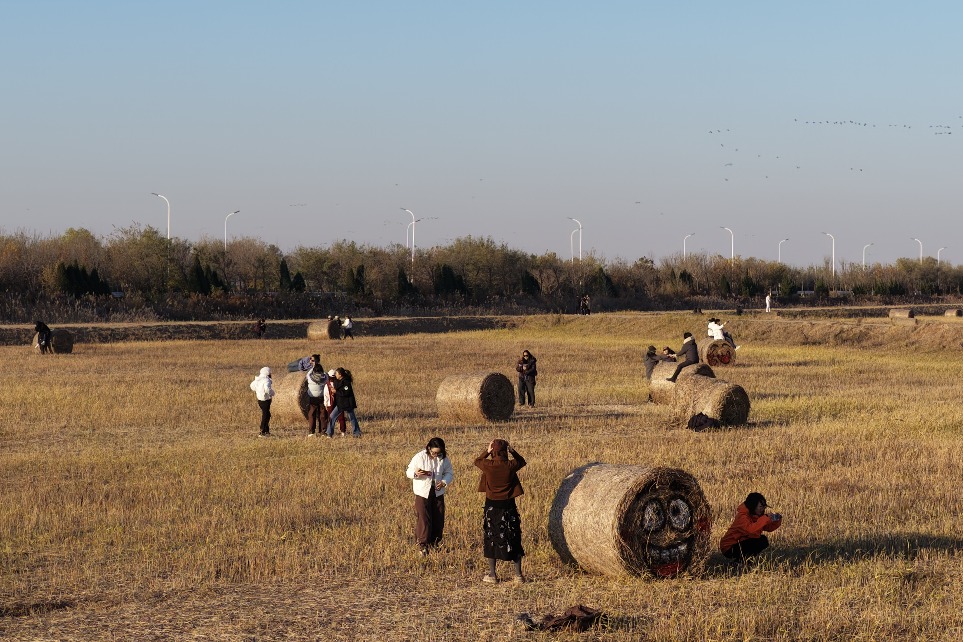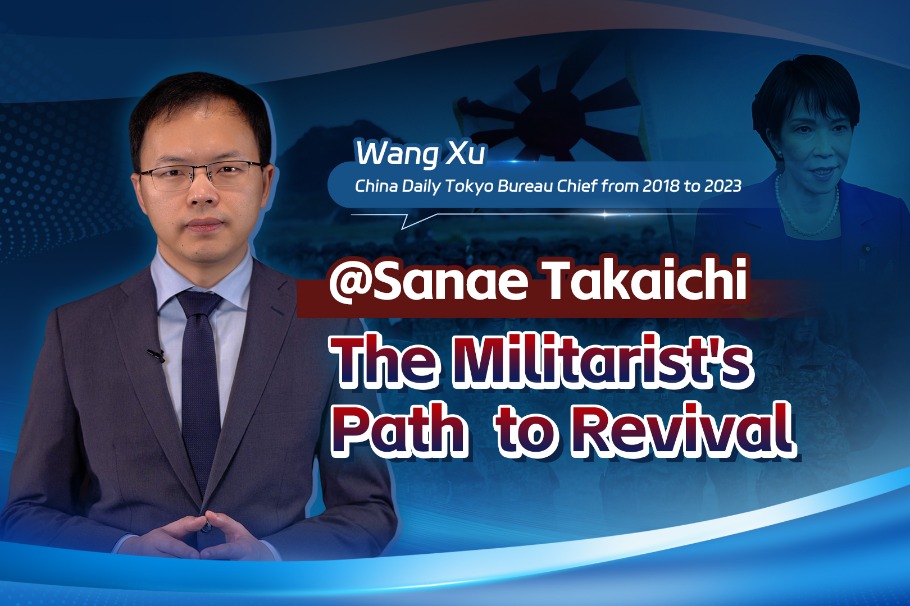Modernity encounters ancient civilization

Spanning millennia, the history and mystery of Sanxingdui's ancient civilization is reaching international audiences through modern digital platforms.
The exhibition Sanxingdui Encounter: A Global Tour of 12K Micro-viewing of National Treasures opened on Oct 11 at the Memor Museum in New York, offering visitors an opportunity to have an immersive virtual experience of the relics and also see the physical replicas of these treasures.
The display will last until Jan 19.
Sanxingdui, an archaeological site located in modern-day Guanghan, Southwest China's Sichuan province, illustrates the civilization of the ancient Shu kingdom, which flourished over 3,000 years ago. Sanxingdui was not discovered until the 1920s, and ongoing archaeological efforts continue to reveal discoveries.
By the end of 2022, fieldwork on six newly uncovered sacrificial pits was nearly complete, yielding a wealth of precious artifacts. Over 4,000 items, including jade, stone and pottery, were unearthed during this phase of excavation. Archaeologists are piecing together the history of the ancient Shu civilization and presenting these findings to the public.
The Shu kingdom, which arose in the Sichuan basin during the Bronze Age, was a key hub for early-stage Chinese civilization. Its people produced finely crafted bronze, jade, gold and ceramic artifacts, depicting mythical creatures, rulers, gods and shamans with exaggerated features such as bulging eyes and enlarged ears.
"Sanxingdui's rich heritage deserves international attention, with its vast cultural significance needing to be shared with a broader audience," says Willa Ao, director of the Memor Museum.
"We want to present the relics through a blend of digital and physical experiences."
One example Ao gives is a bronze figure, which strikingly resembles the stance of an American fitness coach performing a dead lift. Additionally, a bronze tree is adorned with numerous small hanging artifacts, reminiscent of ornaments used to decorate Christmas trees.
Sanxingdui's unearthed bronzes were previously showcased at the Metropolitan Museum of Art in 2002 as part of a broader exhibition on bronze artifacts, but Ao says this time, she wanted to provide New Yorkers a new and interactive way to feel the relics.
This is done through 1:1 replicas from the Sanxingdui Museum's collection, using ultra-high-definition 12k technology, artificial intelligence interaction and virtual reality immersion, which required three years of preparation.
Visitors will have the opportunity to view the famous Bronze Mask with Crown and Protruding Eyes, a rare artifact that provides insight into the ceremonial and spiritual practices of the ancient Shu people.
Also on display is the striking Bronze Head Wearing a Gold Mask, first unearthed in 1986, which illustrates a unique blend of social status and ritual significance.
"Although they are replicas, they remain highly valuable," Ao says. She explains that these reproductions of the Sanxingdui Museum's collection were crafted using identical materials to faithfully replicate the original artifacts.
Visitors will be able to explore the relics using VR technology, which brings large artifacts like the Large Standing Man and the Bronze Sacred Tree into the gallery through virtual exploration.
The exhibition also employs 12K video capture to document smaller artifacts, delicate bronze bells and bird sculptures, magnifying them for a closer look.
Sanxingdui is an important archaeological discovery, not just within Chinese archaeology, but within the world of archaeology, says Kristen Martucci, the exhibition's translator.
Martucci, 26, has been studying Chinese since high school and pursued East Asian studies, particularly ancient Chinese history, at Harvard University.
She primarily helps translate materials into English in a way that is approachable for American and international audiences.
She says her work is also a learning process in both Chinese and history while uncovering the "mystery".
"I learned about Sanxingdui in my graduate school courses, but even for me, seeing these replicas and using this exhibition and VR to experience it — that's new to me, so it's really exciting," she says.

Today's Top News
- Four global initiatives align with Africa's future
- China's model of governance widely praised
- Shanghai jumps to beat of electronic music festival
- COP30 outcomes reflect multilateralism despite headwinds
- 'No room for compromise' on sovereignty, FM says
- Battery tech progress to power EV sector's future






























